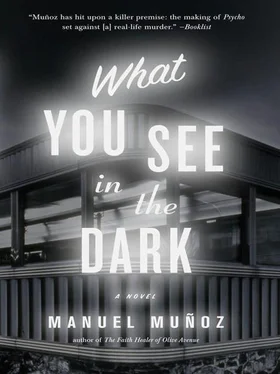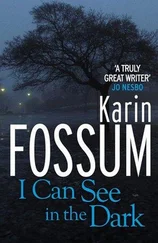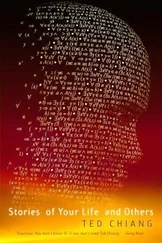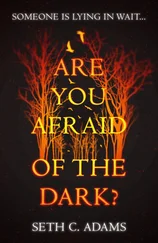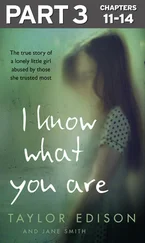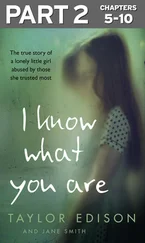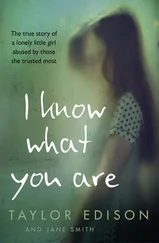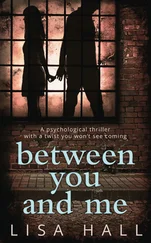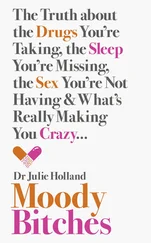Manuel Munoz - What You See in the Dark
Здесь есть возможность читать онлайн «Manuel Munoz - What You See in the Dark» весь текст электронной книги совершенно бесплатно (целиком полную версию без сокращений). В некоторых случаях можно слушать аудио, скачать через торрент в формате fb2 и присутствует краткое содержание. Год выпуска: 2011, Издательство: Algonquin Books, Жанр: Современная проза, на английском языке. Описание произведения, (предисловие) а так же отзывы посетителей доступны на портале библиотеки ЛибКат.
- Название:What You See in the Dark
- Автор:
- Издательство:Algonquin Books
- Жанр:
- Год:2011
- ISBN:нет данных
- Рейтинг книги:5 / 5. Голосов: 1
-
Избранное:Добавить в избранное
- Отзывы:
-
Ваша оценка:
- 100
- 1
- 2
- 3
- 4
- 5
What You See in the Dark: краткое содержание, описание и аннотация
Предлагаем к чтению аннотацию, описание, краткое содержание или предисловие (зависит от того, что написал сам автор книги «What You See in the Dark»). Если вы не нашли необходимую информацию о книге — напишите в комментариях, мы постараемся отыскать её.
—frame by frame, in pans, zooms, and close-ups — Munoz’s re-creation of a vanished era takes the reader into places no camera can go, venturing into the characters’ private thoughts, petty jealousies, and unrealized dreams. The result is a work of stunning originality.
What You See in the Dark — читать онлайн бесплатно полную книгу (весь текст) целиком
Ниже представлен текст книги, разбитый по страницам. Система сохранения места последней прочитанной страницы, позволяет с удобством читать онлайн бесплатно книгу «What You See in the Dark», без необходимости каждый раз заново искать на чём Вы остановились. Поставьте закладку, и сможете в любой момент перейти на страницу, на которой закончили чтение.
Интервал:
Закладка:
When the plane was airborne, the Director settled back into his seat and closed his eyes, trying to sleep. He needed rest after the excitement of his moderate success. A return to form, it was being called, and he tried not to make much of some of the morning articles he’d read, croissant in hand, that stated it was his first unqualified success in twelve years. Twelve years! Unqualified! He’d done several pictures since then, some television, the money pouring in because of his shrewd handling. He didn’t like this tone, the implied judgment, but he knew its root. What he had accomplished twelve years earlier with a motel shower had been simultaneously a high and a low, both what he could never surpass and what others imitated, a distinct point in the history of the entire form. There, twelve years ago, was a marker. There was the new violence. There was the door to the unthinkable. There was the door to the unmentionable.
To be fair, this was said all the time. Five years ago, the handsome Warren Beatty had traded in his own shiny stardom for the crude mask of a criminal, shooting his way into the psyche of an audience who had forever wanted him in only minor variations of the cad, the suave suitor. A year later, Frank Sinatra’s wife cut off all of her hair and headlined as a woman raped by Satan himself. Someone had the nerve to show full blood in the chaos of a gangster shoot-out! Someone had the nerve to show the devil’s eyes! The line could be pushed forward without end, what the human eye could possibly witness without turning away, and already he felt far away from the moment when he had made such a mark. Could he ever make one again?
There was going to be an end point to all these visual high-bars. The Americans — they always crossed the line, not knowing when to stop. They saw no poetry in taking the strange road into the desert, hesitating to go any further. The Director recalled talks in the French cafés about Rossellini and how the Americans devoured the man’s personal indiscretions with Ingrid Bergman, as if the man had never captured the city of Rome at its most desolate and crumbling, his camera swooping into place to order all the chaos with nothing but the vigor of story. Could the Americans ever have pulled off that kind of realism? Could they have offered an elegant answer to Anna Magnani’s frantic run in the street, chasing the military truck that had carted off her fiancé, her arm raised in a futile gesture to halt? The Americans didn’t have an actress who could have tumbled in the street at the sound of machine-gun fire. They had body doubles to save the million-dollar legs.
The Director was heading home to Los Angeles, but he knew that once he returned to the States, the great glow of this recent public appearance would quickly fade. The Americans looked at nothing but surface. He had no big stars this time around, his radiant blonds not in place. What would the Americans do with nothing glamorous to look at? This was why they were so good at those CinemaScope films, made to combat the lure of the home television sets, even if the screen held only wide, long landscape shots without a human being in sight. The Americans were good at lineups of Broadway dancers with legs kicking across the screen. They were exceptional at Bible stories acted out in tony British accents and couture costumes, or star vehicles with exquisite set design but not much of a script. They were good at hookers with hearts of gold. They were good at buckshot violence and bullet sprays, two-bit actors falling in familiar agony. At one time, even the Director would admit, they had been the best at women’s pictures, never enough ways for a woman to quiver at the hell of keeping the secret of an illegitimate child close to her heart, all the while weeping.
The problem with the Americans was that they had had no idea what to do with the violence since he’d given them permission, in his mind, to start filming it with his own bravura take, twelve years earlier. The Americans were always good at dying, but not death. Good at plot, but not fatalism. Good at cowboys shot down from the backs of horses, but not the finality of writhing in the dust. Good at the cars roaring lustily into each other as if no one were in them, but not the full horror of a body hurtling into the rigidity of the steering column. Good at the beautiful Radcliffe heroine succumbing to cancer in her bed, but not the ugly business of the night nurse wiping her clean at two in the morning.
What they didn’t know was that you take the little glimmer of the truth of death when you see it, and then have the nerve to give it light.
Like Gene Hackman being lured into the dark, dangerous silence of an abandoned warehouse, gun drawn in both fear and stubborn will, and the audience left in unfulfilled suspense.
Like the dance marathon contestant, played by Jane Fonda, shot in the head while standing on a California pier, yet falling in a field of tall grass.
Like the wondrous Altman western, with Warren Beatty again, the outlaw fatally wounded in the deepening snow.
Or like the Coppola picture he’d screened only two months ago, a man shot bullet dead center in the head, the bullet continuing its travel to shatter the window in the background. As real bullets must, the force they carry not to be impeded.
He’d seen how an audience rustled in the dark when they responded to a moment like this. He liked the feeling of unease, of excitement, of repulsion, the terrific jolt he received from knowing he had created an image that provoked people. In this film, he knew he had such a sequence. But even he had been astounded by the response.
The film had been slated to screen out of competition. The Director had, at most, modest expectations. The setting was not America, but London. There were no American stars, only Brits. The film had a washed-out color to it, an unfamiliarity. Gone were the actresses with the stylized wardrobes. Gone were the actresses as gorgeous centerpieces. Gone were the days when he could get away with suggesting the menace of violence. Now everyone had to see it. He was over seventy years old, and some people in the audience thought the Director had lost his sure hand when they witnessed the vulgarity of a rape, the pink bud of a nipple being loosened from behind a bra cup. They sat in silence as the killer removed his necktie to strangle his victim. That would have been enough in the old days, the hand on the necktie, the audience already aware that a man was wandering the streets of London strangling women. But this was no longer the old days. Some people groaned at the extended scene of the woman’s struggle, her fingers panicked at the tightening around her neck. Some people groaned at its excess. Some people groaned at the time in which they were all living, how even someone like the Director had little choice but to cave in to such unthinkable images. A woman’s violated breast. A stretch of spittle from a dead woman’s gaping mouth.
But later in the film, something different happened. Another death was coming. The audience knew. There was no suspense. It was coming, like seeing two cars careering into an intersection with no way for either to slow down. There she was, the woman. By this point, the audience knew what women were for. She wore an ordinary dress, orange with white buttons, nothing glamorous like the one some people in the audience remembered Grace Kelly wearing — ice blue satin. She carried a white bag and stormed out of a pub, only to be met unexpectedly by the killer. He was a charmer. They walked together through the bustle of Covent Garden, passersby hauling flowers and sacks of vegetables. The killer lured her easily to his flat. They walked there together. They climbed the red-carpeted stairs, her white shoes and the give of the carpet. The audience knew what was going to happen in that room, but the camera stopped on the landing. It stopped on the landing and watched the woman enter, the killer following behind. The camera did not move. The audience noticed. The camera stayed as if to watch, then began a slow reversal down the steps. The camera looked away from the door. The camera caught the deep red floral pattern of the cheap curtains on the landing window. It caught the zigzag of the fire escape of the building across the way. It caught the quiet of the stairwell, no one hearing what was going on upstairs. It caught the gradual descent into the empty, lonely hallway, then the slow exit to the street, to the bustle of the everyday, the trundling wheelbarrows, the footsteps, the trucks loaded with produce, the vegetable sacks being lugged over shoulders, the street so noisy and the window up above where everything terrible was happening but need not be shown.
Читать дальшеИнтервал:
Закладка:
Похожие книги на «What You See in the Dark»
Представляем Вашему вниманию похожие книги на «What You See in the Dark» списком для выбора. Мы отобрали схожую по названию и смыслу литературу в надежде предоставить читателям больше вариантов отыскать новые, интересные, ещё непрочитанные произведения.
Обсуждение, отзывы о книге «What You See in the Dark» и просто собственные мнения читателей. Оставьте ваши комментарии, напишите, что Вы думаете о произведении, его смысле или главных героях. Укажите что конкретно понравилось, а что нет, и почему Вы так считаете.
